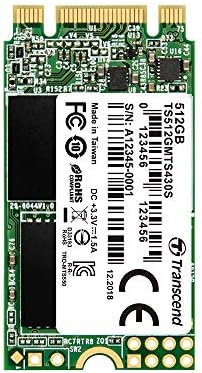



Price: £62.80 - £58.44
(as of Jan 22, 2024 20:13:58 UTC – Details)
From the manufacturer
Features






3D expansion to break through limits
Unlike the existing planar NAND chips, 3D NAND flash is a type of flash memory in which the memory cells are stacked vertically in multiple layers. 3D NAND is developed to break through density limitations of the 2D planar NAND, and thus can deliver a greater level of performance and endurance.
Perfect for your Ultrabook
Compliant with M.2 form factors Type 2242 and 2280, Transcend’s 3D NAND M.2 SSDs are perfect for use in Ultrabooks and lightweight notebooks. Measured at just 80mm in length, the M.2 SSD 830S makes for an easy upgrade to your computer, taking up little space while giving it a much needed energy boost.
Superior transfer speeds
Featuring the M.2 standard (80mm), the next generation SATA III 6Gb/s interface and a powerful controller, Transcend’s M.2 SSD 830S reaches incredible read and write speeds of up to 560MB/s and 520MB/s. When used as a cache, the M.2 SSD 830S provides 1.5 times faster boot time than conventional hard drives.








High IOPS to speed up loading times
Dedicated to maximizing high-performance computing, the M.2 SSD 830S features 4k random file read and write speeds up to 85,000 IOPS that deliver incredibly short loading times and almost instant response for heavy graphics and multimedia applications.
Store more in less space
The M.2 form factor enables expansion and integration of functions onto a single form factor module solution. M.2 SSDs include a smaller form factor but with larger capacities than that of mSATA and half-slim SSDs.
SSD Scope software
Transcend SSD Scope is advanced, user-friendly software that makes it easy to ensure your Transcend SSD remains healthy, and continues to run fast and error-free by determining the condition and optimizing the performance of your drive.
Guaranteed quality
Transcend’s solid state drives are built to the highest standards and rigorously tested, and offer outstanding quality, performance, and reliability.
Capacity
120GB ~ 240GB 128GB ~ 512GB 120GB ~ 960GB 128GB ~ 1TB
Interface
SATA III 6Gb/s SATA III 6Gb/s SATA III 6Gb/s SATA III 6Gb/s
Form Factor
M.2 Type 2242 M.2 Type 2242 M.2 Type 2280 M.2 Type 2280
Flash Type
3D NAND flash 3D NAND flash 3D NAND flash 3D NAND flash
Max. Sequential Read/Write (CrystalDiskMark)
R 500MB/s, W 430MB/s R 560MB/s, W 500MB/s R 550MB/s, W 500MB/s R 560MB/s, W 500MB/s
Max. 4K Random Read/Write (IOmeter)
R 40,000 IOPS, W 75,000 IOPS R 80,000 IOPS, W 85,000 IOPS R 70,000 IOPS, W 75,000 IOPS R 85,000 IOPS, W 85,000 IOPS
DDR3 DRAM Cache
–
✓
–
✓
Technology
TRIM & NCQ command, S.M.A.R.T., Advanced Garbage Collection, DevSleep mode, RAID engine, LDPC coding TRIM & NCQ command, S.M.A.R.T., Advanced Garbage Collection, DevSleep mode, RAID engine, LDPC coding TRIM & NCQ command, S.M.A.R.T., Advanced Garbage Collection, DevSleep mode, RAID engine, LDPC coding TRIM & NCQ command, S.M.A.R.T., Advanced Garbage Collection, DevSleep mode, RAID engine, LDPC coding
Space-saving M.2 Type 2242 form factor
Up to 550 MB/s read; 480 MB/s write
3D NAND Flash and DDR3 DRAM cache
RAID engine and LDPC (Low-Density Parity Check) error correction for high data integrity, developed with SLC caching technology for exceptional transfer speeds
Supports DEVSLEEP mode with extremely low power consumption, S.M.A.R.T., TRIM, and NCQ commands
Category: Setup/Operation Please follow the procedures below on your computer: 1. Right click on “This PC” and select “Management” 2. Please click “Disk Management,” the message “Initialize Disk” appears on the screen. Please select “MBR” as the partition style. (Note: It is recommended that you select the “GPT” partition style when the disk capacity is 4TB or more.)
3. After initializing the hard drive, right click on “New Simple Volume” on your SSD. Then you can configure it with your settings. 4. After you have successfully assigned the SSD partition style and volume, it will normally be recognized by the computer.

